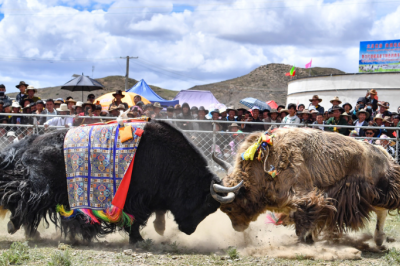|
Poverty alleviation funding methods have been innovated. The government has taken targeted funding measures to meet both specific financing needs for poverty alleviation and the specific requirements of development programs in impoverished areas. It has also worked to meet the financial needs of poverty alleviation through developing local industries with special characteristics, relocating people from impoverished areas, and providing employment and schooling for the impoverished population. To support the poor in developing their businesses and increasing incomes, the government has developed innovative methods of microfinance that provide registered poor households with collateral-free small loans, up to RMB50,000 on a three-year term, at benchmark interest rates, with interest rates subsidy from government poverty alleviation funds and risk compensation from county-level funds. Poor households had received small loans of RMB120 billion by the end of 2015. China has endeavored to promote inclusive finance in impoverished areas and improve the payment service systems in rural areas to reach out to villages and households. The government has improved targeted financial measures for poverty alleviation, set up a poverty alleviation relending program, which offers loans to the poor at even lower interest rates than those of the agricultural relending program, leveraged multiple financial policy tools, and directed more financial resources to the impoverished areas and people. The government has also explored methods to alleviate poverty through insurance. Land use policy toward development for poverty alleviation has been further improved. The state has adjusted and improved overall land use planning, taking into full account the need for development-oriented poverty alleviation and the need for population relocation as a method of poverty alleviation, and has taken a holistic approach to planning the scale, structure and distribution of land used for construction, giving priority to land used for poverty alleviation. More flexible policies toward the administration of land resources have been adopted. To ensure all needs relating to poverty alleviation are covered, in the process of development-oriented poverty alleviation and population relocation the government has reinforced support for linking the increase in land quota for urban construction with the decrease in land quota for rural construction, allowing any valid surplus quota to circulate within each province. According to the principle of industry nurturing agriculture and cities supporting rural areas, the benefits from the linking have been promptly returned to impoverished areas. The state has given policy support in terms of construction land quotas to areas in western and central China inhabited by ethnic minorities, and to contiguous impoverished areas with serious difficulties, in order to use unproductive hills, valleys, mounds and wasteland to develop agritourism. Targeted poverty alleviation policy has been effectively implemented. A total of 320 units of the central government and the Party have taken responsibility for helping to lift their targeted areas out of poverty, and 592 counties that are key targets in the state poverty alleviation development program have received help from units with which they are paired. The Party and government has improved the leading unit contact mechanism and designated nine units as the leading units responsible for contacts in poverty alleviation pair work. A total of 68 central government-owned enterprises have carried out a campaign in the 108 counties in the disadvantaged former revolutionary base areas with which they are paired, helping more than 10,000 poor villages address water, electricity, road and other infrastructure problems. During the 12th Five-Year Plan period (2011-2015), the Party and government units appointed a total of 1,670 personnel to temporary posts working on poverty alleviation in the aforementioned 592 key counties, sent RMB11.86 billion in poverty alleviation funds and materials into these counties, helped them absorb investments totaling RMB69.58 billion, and organized the export of 310,000 workers from these counties. The People's Liberation Army and the Chinese People's Armed Police Force have set up over 26,000 contact outposts in 401 townships of 35 counties with which they are paired, and helped 3,618 poor villages there. |
- Home
- News |Tibet |Exclusive |China |World |Related News |Latest
- Documents |White Papers |Others
- Photo |Politics |Economy & Society |Culture & Religion |Human & Nature |Beautiful Tibet |Other Tibetan-Inhabited Area |Exchanges |Related
- Video |News |Documentary |Micro-Video |Entertainment
- Art
- Tourism
- In Focus
- About Tibet






